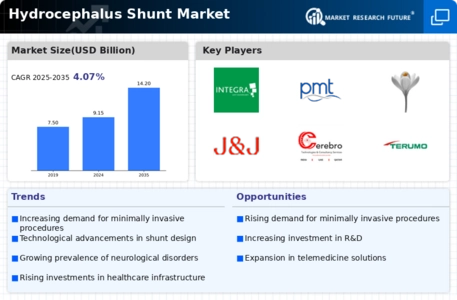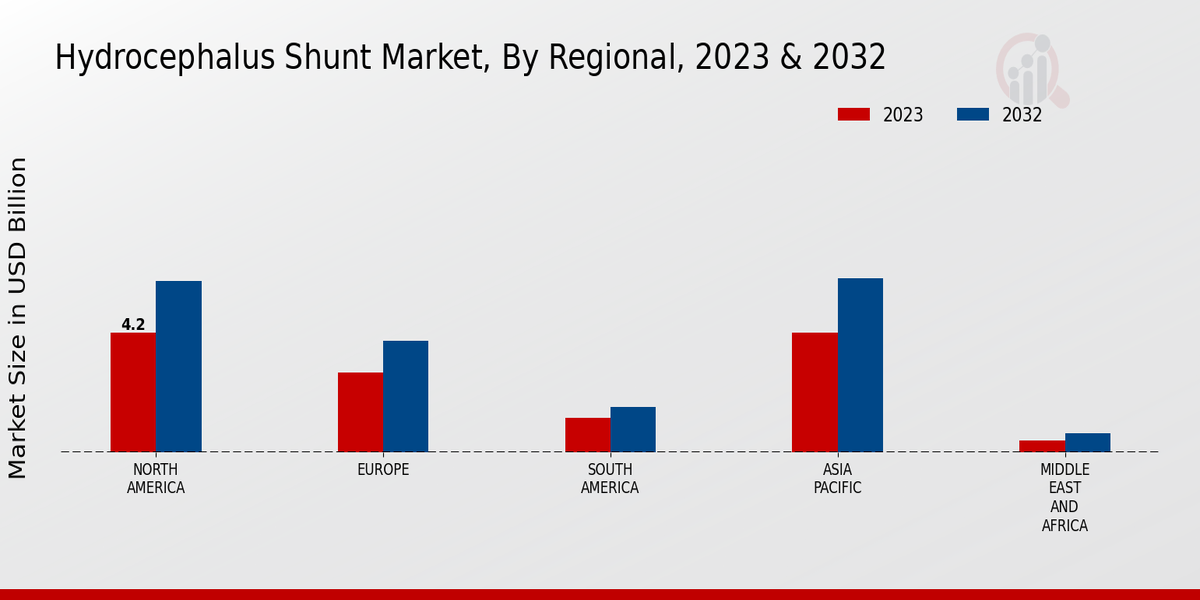Market Growth Projections
The Global Hydrocephalus Shunt Market Industry is projected to experience substantial growth over the next decade. With a market value expected to reach 9.15 USD Billion in 2024 and further increase to 14.2 USD Billion by 2035, the industry is on a promising trajectory. The anticipated compound annual growth rate of 4.07% from 2025 to 2035 indicates a robust demand for hydrocephalus shunts as healthcare systems continue to prioritize effective treatment solutions. This growth is likely to be driven by various factors, including technological advancements, increasing prevalence of hydrocephalus, and rising healthcare expenditures.
Rising Healthcare Expenditure
The Global Hydrocephalus Shunt Market Industry is benefitting from an increase in healthcare expenditure across various regions. Governments and private sectors are investing more in healthcare infrastructure, which includes the procurement of advanced medical devices such as hydrocephalus shunts. This trend is particularly evident in developing countries, where improved healthcare access is leading to better diagnosis and treatment options for hydrocephalus. As healthcare spending continues to rise, it is expected that the market will experience a compound annual growth rate of 4.07% from 2025 to 2035, further solidifying the industry's growth trajectory.
Increasing Prevalence of Hydrocephalus
The Global Hydrocephalus Shunt Market Industry is experiencing growth due to the rising prevalence of hydrocephalus, particularly among pediatric populations. Statistics indicate that hydrocephalus affects approximately 1 in every 1,000 live births, leading to a significant demand for effective treatment solutions. As awareness of this condition increases, healthcare systems are prioritizing early diagnosis and intervention, thereby driving the need for hydrocephalus shunts. This trend is expected to contribute to the market's expansion, with the industry projected to reach 9.15 USD Billion in 2024, reflecting a growing recognition of the importance of timely medical intervention.
Technological Advancements in Shunt Design
Innovations in shunt technology are playing a crucial role in the Global Hydrocephalus Shunt Market Industry. Recent advancements include the development of programmable valves and materials that enhance biocompatibility and reduce the risk of infection. These technological improvements not only increase the efficacy of treatment but also improve patient outcomes. For instance, programmable shunts allow for adjustments in cerebrospinal fluid drainage, catering to individual patient needs. As these technologies become more widely adopted, they are likely to drive market growth, contributing to an anticipated market value of 14.2 USD Billion by 2035.
Growing Awareness and Education Initiatives
Awareness campaigns and educational initiatives regarding hydrocephalus are significantly influencing the Global Hydrocephalus Shunt Market Industry. Organizations dedicated to hydrocephalus research and advocacy are working to inform both healthcare professionals and the public about the condition and its treatment options. This increased awareness is leading to earlier diagnoses and a greater demand for shunt procedures. As more individuals understand the implications of hydrocephalus, the market is likely to see a surge in the utilization of shunts, thereby enhancing overall treatment outcomes and driving market growth.
Aging Population and Associated Health Issues
The Global Hydrocephalus Shunt Market Industry is also being propelled by the aging population, which is increasingly susceptible to neurological disorders, including hydrocephalus. As the global demographic shifts towards an older population, the incidence of age-related conditions that may lead to hydrocephalus is expected to rise. This demographic trend necessitates the availability of effective treatment options, such as hydrocephalus shunts, to manage these conditions. Consequently, the market is poised for growth as healthcare providers adapt to the needs of an aging population, ensuring that appropriate interventions are readily available.








